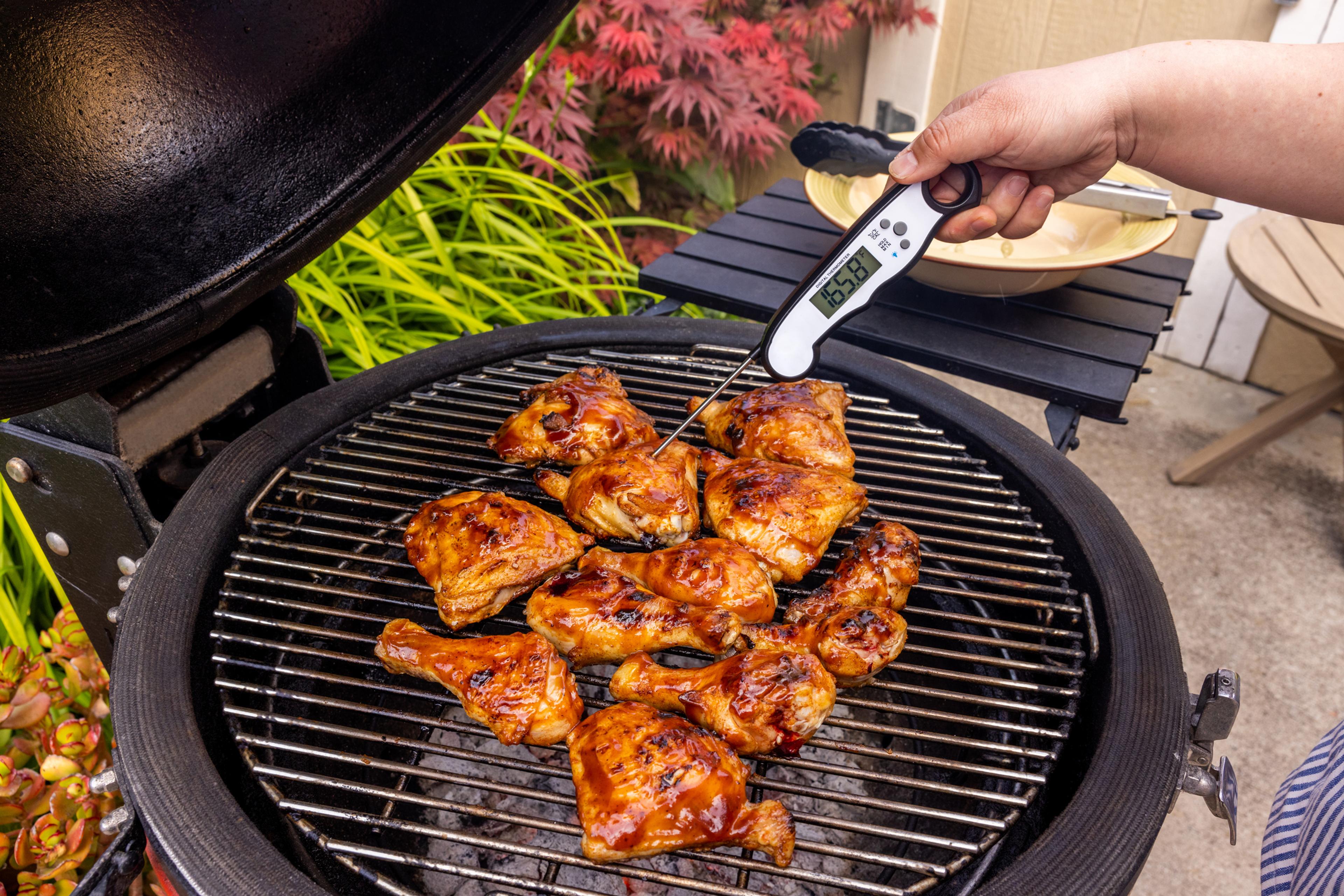What’s a Safe Temperature to Cook Your Meat?

Lauren Coin
| 3 min read

Key Takeaways
- Eating undercooked meat can cause foodborne illnesses such as food poisoning and salmonella.
- Cook meat to a safe internal temperature and check it with a food thermometer.
- Use safe practices when handling and storing meat to prevent contamination and illnesses.
Are you trying out a new recipe? Looking to expand your cooking skills? Curious about meat safety? No matter the reason, it’s always important to take precautions and educate yourself on proper food hygiene, especially when it comes to cooking meat.
Eating meat that has not been fully cooked to the appropriate internal temperature can lead to foodborne illnesses such as salmonella, listeria and E. Coli.
You can prevent food poisoning with safe food handling practices, according to the U.S. Centers for Disease Control and Prevention. To decrease the risk of illness, follow this guide to safe minimum internal cooking temperatures from the Department of Health and Human Services.
Safe internal cooking temperatures
- Beef, bison, veal, goat and lamb: 145 degrees Fahrenheit (63 degrees Celsius). Rest time: 3 minutes.
- Chicken, turkey and other poultry: 165°F (74°C)
- Steaks, roasts and chops: 145°F (63°C). Rest time: 3 minutes.
- Ground meat and sausage: 160°F (71°C)
- Raw ham: 145°F (63°C). Rest time: 3 minutes.
- Precooked ham: 165°F (74°C)
Some types of meat require rest time after cooking. This allows the innermost parts of certain meats to become fully cooked.
This list contains the minimum temperature requirements, but it’s OK to cook your meat a little longer for a more well-done taste.
It is important to know the symptoms of food poisoning, which include:
- Fever
- Nausea
- Diarrhea
- Headache
- Stomach pain
- Vomiting
These symptoms start within two to six hours of ingesting contaminated food and typically only last 12 to 48 hours. Usually, food poisoning can be treated at home, but you should seek medical attention if symptoms worsen or you are unable to tolerate fluids.
How can I tell if my meat is done?
It’s hard to tell if your meat is fully cooked by looking at it. The best way to know for sure is to use a food thermometer. Toward the end of cooking time, place the thermometer in the thickest part of the meat without touching the bone. Check the temperature in multiple places to make sure the food has been cooked evenly.
Food safety tips to remember
- Wash hands and surfaces often: Wash your hands for at least 20 seconds with soap and water before, during and after food preparation. It’s especially important to wash your hands after handling uncooked meat to prevent the spread of germs. Regularly sanitize your utensils, cutting boards and countertops.
- Avoid cross-contamination: Store raw or marinating meat in sealed containers separate from other foods in your refrigerator. Use a separate cutting board for uncooked meat.
- Refrigerate meat and leftovers properly: Refrigerate prepared foods within two hours of cooking to prevent bacteria from growing. Temperatures from 40 to 140 degrees Fahrenheit are known as the “danger zone” for perishable foods.
- Thaw meat appropriately: Avoid thawing meat on countertops as it results in meat sitting in the danger zone for too long. Instead, thaw it overnight in the refrigerator or in cold water.
If you’re still unsure whether your meat has been safely cooked or not, it’s best to take caution and discard it.
Photo credit: Getty Images
Related:





